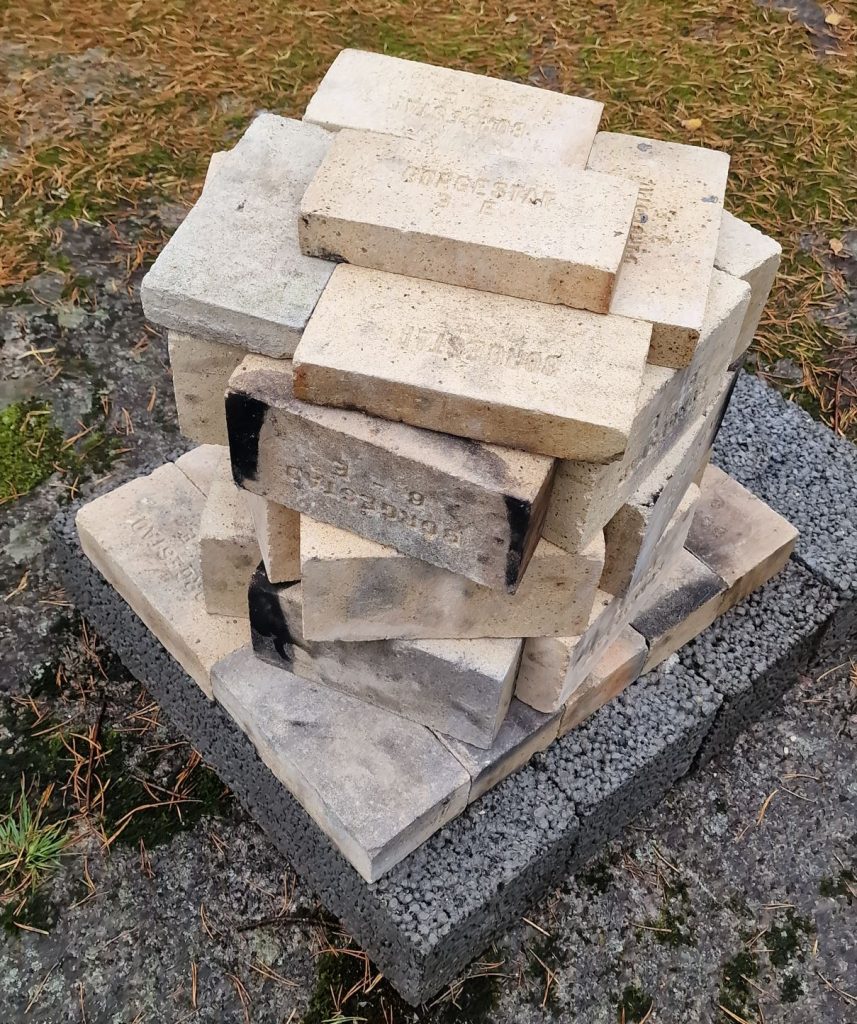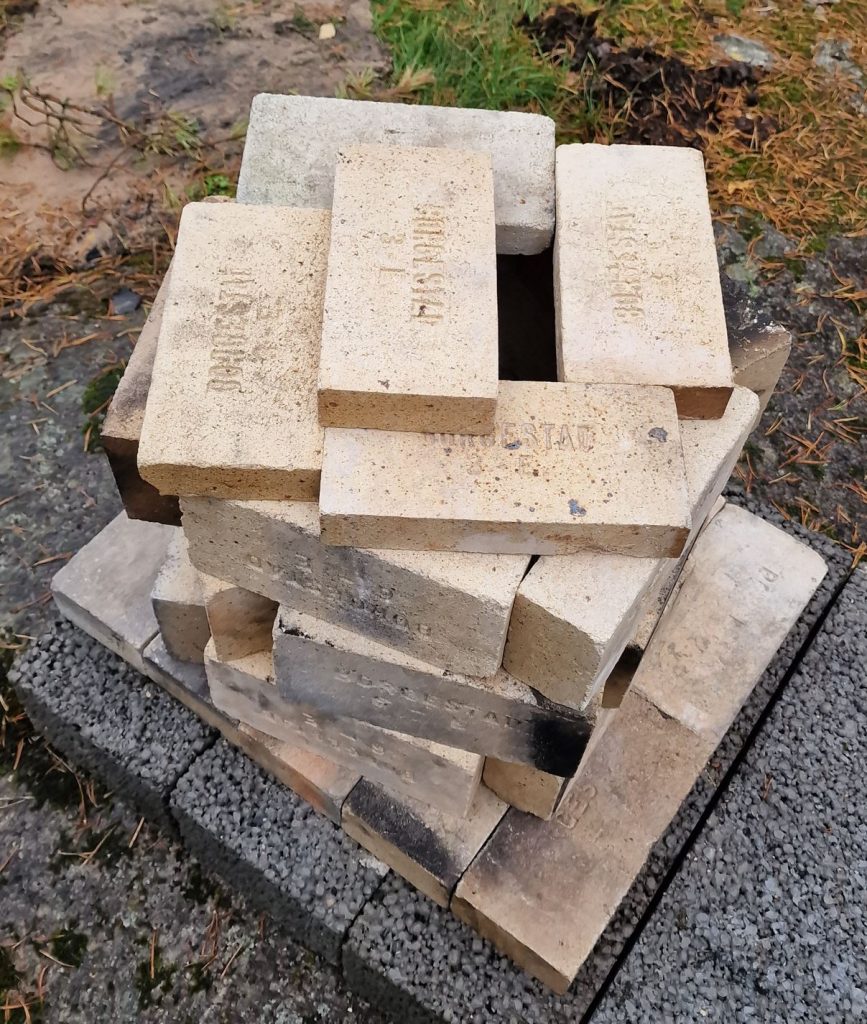
The sawdust kiln is for bisque fire ceramic (and bisque fire is the first fire when you burn raw, dry clay to ceramic, the second fire is the time you are glazing the ceramics.
The sawdust kiln is a low-temperature kiln and it makes a lot of smoke. The idea is simple, you pack it tight with ceramic and sawdust and light it up at the top. This tight mix of sawdust gives reduced access to air, and the fire will slowly burn its way from the top to the bottom. The kiln has some benefits; you only need 18-20 stones to build it, and sawdust is a cheap burning material. You pack it, ignite it, and it will burn til it’s finished without additional work (unless it stops burning, then ignite it again).
I tried two designs of this kiln, a circular and one square. I first tested the circular one on an unlucky day, it was quite strong wind that day, and it blew through the side of the kiln and messed up the concept; the kiln needs to burn slowly top-down. Now the side-draft made it burn from two sides, and it was “digging” holes along the south side of the kiln, made it burn from top ans the sides at the same time.

The second attempt was with the square kiln in a day without wind, and the result was quite the same. Except this time it was burning top-down as expected, it was actually both hot and smoking the next day, but all sawdust was turned to ashes.

Here the goods are bisqued-fired and turned to ceramic, most of the goods were black meaning the kiln environment was almost complete without oxygen. Someplace the soot had layered, and the black, fat, glossy soot will make it difficult for the glaze to stick to the ceramic surface if you want to glaze it later, the temperature was low, maybe also too low to sinter all the objects. On the positive side, this fire gives a really deep, matte surface if you like this primitive black finish on your pottery.

In both firings the thickest pieces cracked, or not really cracked; more shot-out parts of the goods. When clay with thick walls “shoots out” parts like this, it is always related to too quick heating, where trapped water doesn’t have time to escape, and develops steam at 100 degrees Celsius. and then break the clay into pieces to escape.
Overall This is a simple, fun, and easy entry-kiln, but its biggest disadvantage is that even if it burns slowly, it doesn’t heat many centimeters down into the sawdust. So it can burn for 12 hours, and still, your work can break out pieces that get heated too quickly.

Pictures from the process:
















